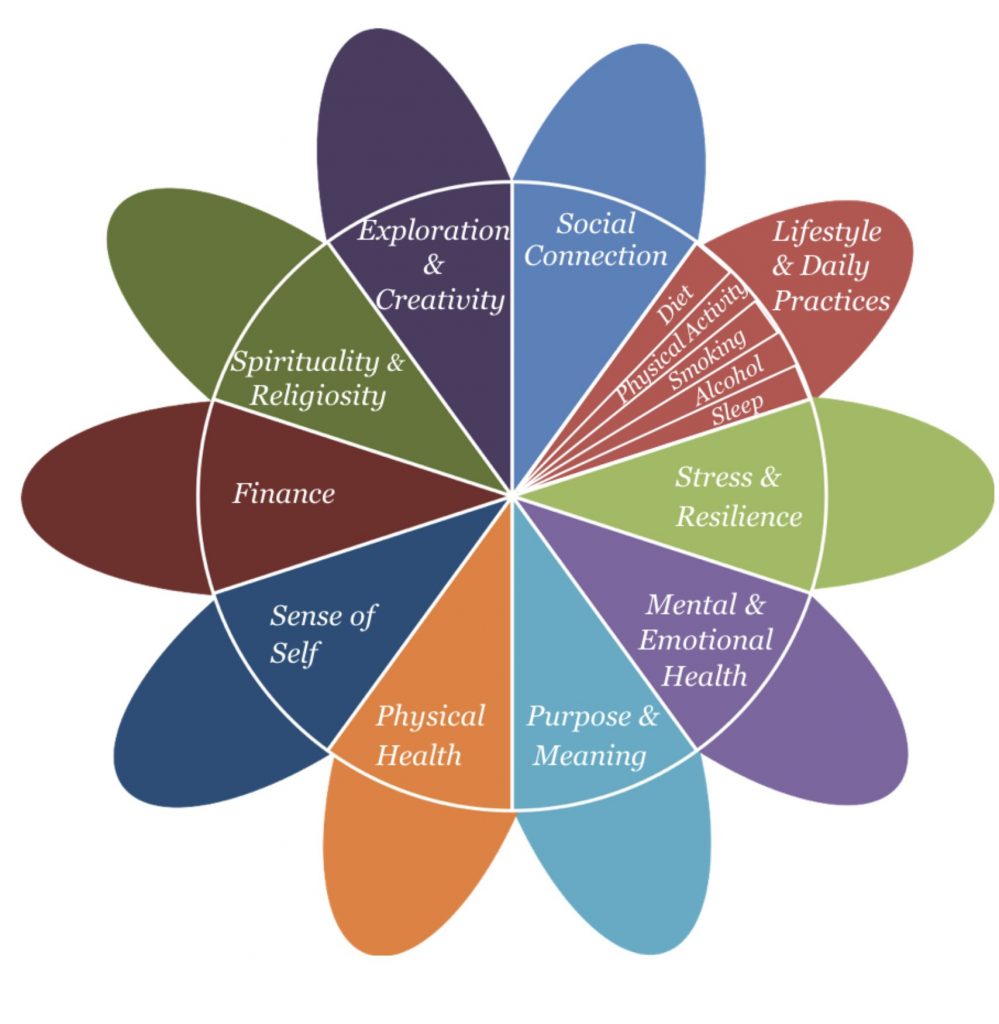
After five years, the Stanford WELL for Life study has completed Phase I, and I’m excited to share the team’s key accomplishments and what the future holds for the WELL study.
The WELL study started with the launch of the Wellness Living Laboratory in 2014. We can thank Dr. John Farquhar for leading the charge to get things up and running so quickly.
As many of you know, John was the founder of the Stanford Prevention Research Center. He was also a lifelong friend and one of my mentors. I recall so many lively conversations over the years about our shared passion for disease prevention. A common topic was how to study disease prevention in a measurable, scientific way, but so too was uncovering the diverse factors that relate to optimal well-being.
Of course, we agreed on the usual suspects – physical health, mental and emotional health, and spirituality – but we also knew there was more behind this seemingly elusive notion of well-being.
But what?
This is the question we need to answer if we want to improve well-being for everyone. It starts with finding a better, more complete definition of “well-being,” one that captures all the diverse factors that people point to when they talk about their well-being. Then, we need to learn how best to measure it and, of course, promote it.
That’s what the WELL study is all about.
John did a yeoman’s job getting the WELL study up and running. Amway provided Stanford University with much of the seed money to get the ball rolling, thanks to an unrestricted gift through the Nutrilite Health Institute Wellness Fund. John provided the visionary leadership, and the research team hit the ground running.
Building a solid foundation for future research
The first phase of the WELL study was completed in December 2019. During these initial five years, the research team focused on creating the infrastructure needed to support and grow its research efforts and foster collaboration with others interested in sustaining global health. To date, they have recruited over 28,000 study participants and have five WELL cohorts around the world, including WELL Bay Area (United States), WELL China, WELL Taiwan, WELL Singapore and WELL Thailand.
Identifying a more complete definition for “well-being”
Using solid research methods, the WELL team has been able to uncover just how multi-dimensional well-being is. A fulfilling life, it turns out, is much more holistic than just physical fitness or mental health.
The researchers identified at least 10 separate domains that people associate with well-being. Yes, a healthy mind, body and spirit are included, but other domains related to a person’s social, economic, and physical environments are also important.
And, some of these may surprise you.
For example, people also rate factors like social connectedness, financial security, resilience and stress management, a sense of self, and the ability to explore and be creative as important for their well-being.
Armed with this information, the team was able to develop a qualitative questionnaire that could help them better understand the impact of each domain on the level of an individual’s level of well-being. While they are all important, some are more important than others depending upon where you live. In the WELL Bay Area cohort, for example, the researchers found that well-being is mostly linked to social connectedness and lifestyle behaviors. In the WELL China cohort, however, the key well-being domains are physical health and stress/resilience.
To me, this is such valuable information. Why? It allows us to focus on the specific factors that matters most to people in their own communities.

WELL BioBank and its role in accelerating well-being research
The researchers are also collecting clinical information on study participants in various WELL cohorts. They now have over 300,000 blood, urine, stool, toenails and hair specimens from the WELL cohorts in Asia. All specimens are collected in the WELL BioBank, which serves as a first-of-its-kind repository for such a vast data set.
As the researchers analyze the information collected, they are publishing their findings to share with public health stakeholders in academia, business and government. And, they are off to a wonderful start. The WELL team has already published six articles in peer-reviewed journals on their initial findings, and they expect to submit a dozen more in 2020.

Future plans to expand and streamline
I am so proud that Amway and the Nutrilite Health Institute played an important role in launching the WELL study. Now other organizations and individuals are funding the WELL study as it enters its second phase. This is an important phase as the team builds on their initial work, expands their global reach, and streamlines data collection with innovative technologies like wearable devices that can capture real-time data.
Dr. Farquhar passed away in 2018 at the age of 91, one year before the completion of the first phase of the WELL study. I miss him and our lively conversations about well-being. If he were alive today, I can only imagine how incredibly proud John would be of the WELL team, their initial accomplishments and their commitment to take the WELL study into the next phase. I know I am. After all, it all adds up to one important thing: Helping more people live a fulfilling life with purpose.
Continuing to lead the way in wellness research
The WELL team continues to investigate the lifestyle factors that matter most for people today. In one fascinating study, Professor Ann Hsing, PhD, MPH, the primary investigator for three WELL cohorts (China, Singapore and Taiwan) and the Stanford WELL for Life research team are currently investigating the effect of sheltering in place on well-being. For this study, about 5,000 study participants are completing a WELL questionnaire that measures distress and other parameters of well-being over the next year. With information like this, we can get a better handle on the short- and long-term effects of physically distancing on physical health, emotions and social connectedness.
Stay tuned!

P.S. To learn more about the WELL researchers, publications, updates on the WELL cohorts around the world, visit the official Stanford WELL for Life website.
P.S.S. Don’t forget to subscribe to our RSS feed and have blog posts delivered right to your inbox.

Great info